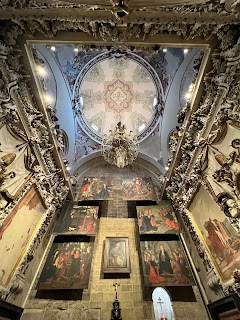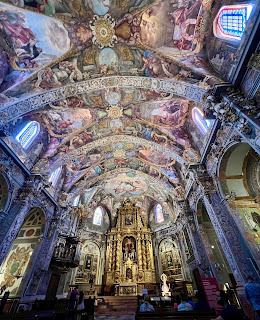Among other things, Valencia is known for its food. Paella is the signature dish. Today we had a great opportunity to learn how to cook paella from a MasterChef.
This is one of the most fun experiences I’ve had here in Spain. We started the class by going to the market, which was right across the street. This place was amazing. Seasonal fruits and vegetables, olives, beans, meats, and seafood of the freshest variety. In the United States, the food in this market would’ve been marked up to the point that they might only be accessible to those with extra cash to burn. This is not the case in Spain. Fruits and vegetables are heavily subsidized by the government making them accessible to all. And Spaniards take pride in knowing where their food comes from and choosing the freshest product. Seafood, rabbit, and chicken are presented as a whole animal. This is because you can only choose fresh protein by looking into its eyes and seeing the color of the head. It scares me that I did not know how to select a fresh fish up until today.
Our instructor then patiently taught us how to make three dishes: a Spanish omelette as a starter, traditional paella as the main meal, and an orange cinnamon, dessert cake.
A Spanish omelet is a combination of egg, potatoes, and onions cooked in a fry pan.
We learned it is traditional to eat and drink as you cook. Not to be left out, we followed suit and enjoyed some sangria, jamon, and crackers while we cooked. We learned that traditional Valencia’s paella is not actually called paella but rather “community rice” or “rice with things.” And while many think paella must include seafood, Valencians would never desecrate the dish with seafood. Chicken, rabbit, and snails (gross) are the only acceptable proteins to include! Paella was born as peasant food and was made of ingredients most available.
The pan we cooked in was literally the size of a saucer sled. The reason for this is paella must never be more than one inch deep and if you are going to cook for your whole family, you better have one big pan. We learned that the rice must be short rice in order to absorb all of the water and flavor. The rice must also be a yellow color, ideally achieved with saffron ($$$) or food coloring. But maybe the most fun part of this experience was burning rosemary in order to create a smoky, Rosemary flavor.





















































